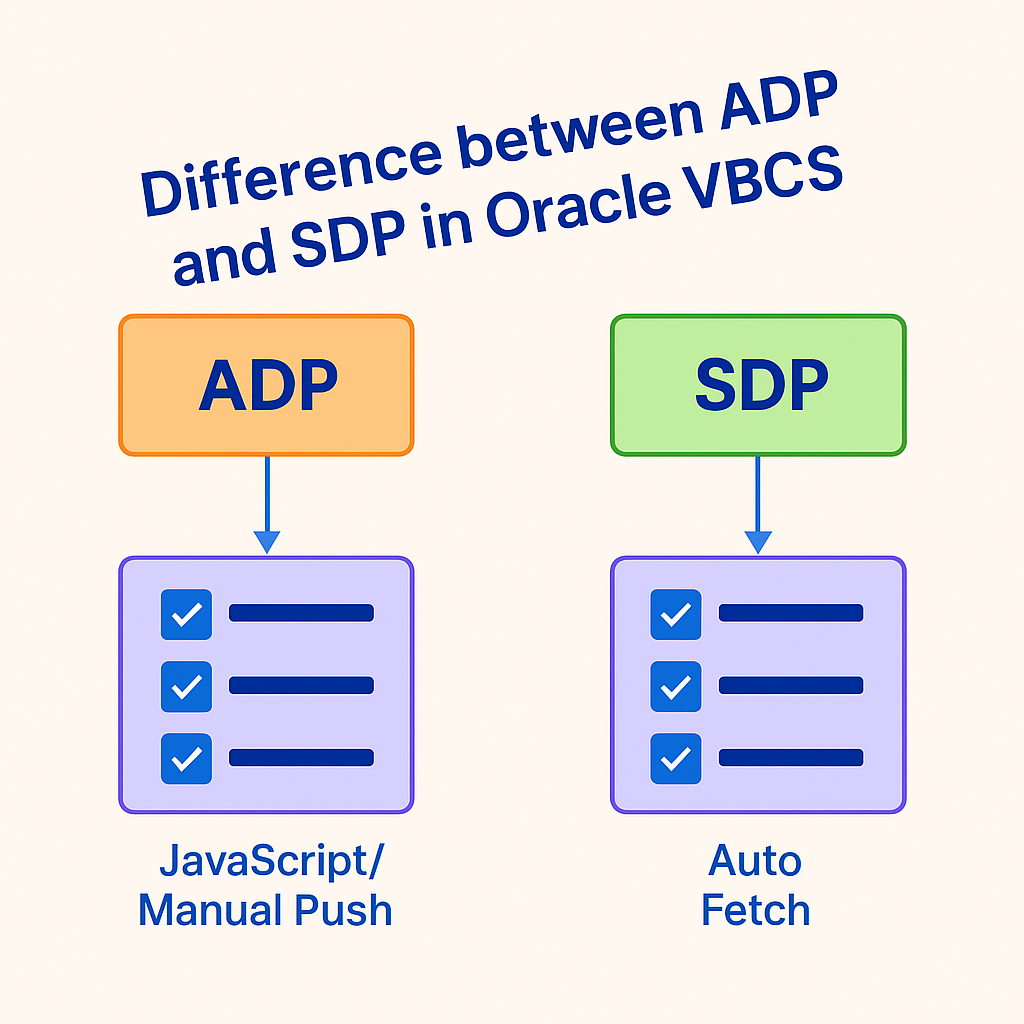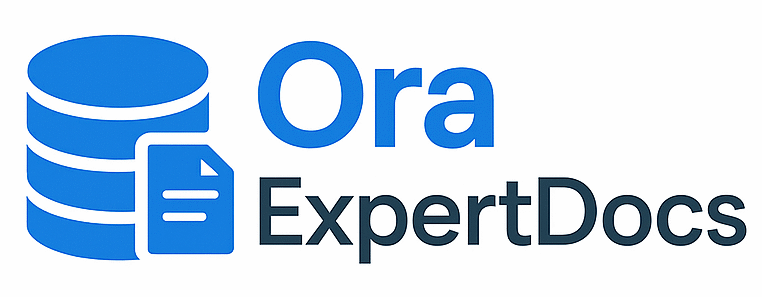In this post, we will see the difference between ADP and SDP in VBCS.
In VBCS, data providers serve a bridge between your data and UI components (like table, lists, charts etc.).
Two of the most used are:
(A) SDP (Service Data Provider)
(B) ADP (Array Data Provider)
They help the UI know what data to display, how to display it and where to get it from.
Think of VBCS as a restaurant, and data providers as waiters who bring data (food) from the kitchen (backend or local memory/REST):
-
SDP is like a waiter fetching fresh food directly from the kitchen (API/backend) whenever the customer (UI) asks for it.
-
ADP is like a buffet table where all dishes (data) are already laid out in memory, and the customer (UI) picks what they want.
Let us understand features of SDP and ADP in detail.
SDP (Service Data Provider):
SDP connects directly to REST or a business object (BO). It automatically handles the fetching, paging and mapping of records.
It supports built-in pagination, sorting and filtering.
SDP is automatically triggered to fetch data when page loads or components bound to SPD becomes visible. This is default behavior unless you disable Auto-fetch.
We can manually trigger or re-execute an SDP by calling refresh action in action chain.
ADP (Array Data Provider):
ADP is used when your data is already available on the client side like in a JavaScript array or a variable. It is perfect for custom lists, filtered data or when you are transforming backend data before binding it to UI.
ADP is useful for custom or Filtered data.
It will not auto-refresh from backend. It must be manually refresh or update values.

Below table will show the difference between SDP and ADP.
Feature | SDP (Service Data Provider) | ADP (Array Data Provider) |
Source | REST Service / Business Object | JavaScript Array or Variable |
Use Case | Backend/live API data | Local, client-side, or transformed data |
Dynamic | Yes – auto-fetches data | No – you manually manage data |
Sorting/Pagination | Supports backend paging/filtering | Needs manual implementation |
Best For | Displaying real-time data from APIs | Handling temporary, filtered, or custom datasets |
Conclusion:
Both SDP and ADP are powerful tools in VBCS:
(1) Use SDP for any direct connection with backend systems.
(2) Use ADP when you need to manipulate or filter data on the client side.
Understanding when and how to use each is key to building high-performance, user-friendly VBCS applications.
